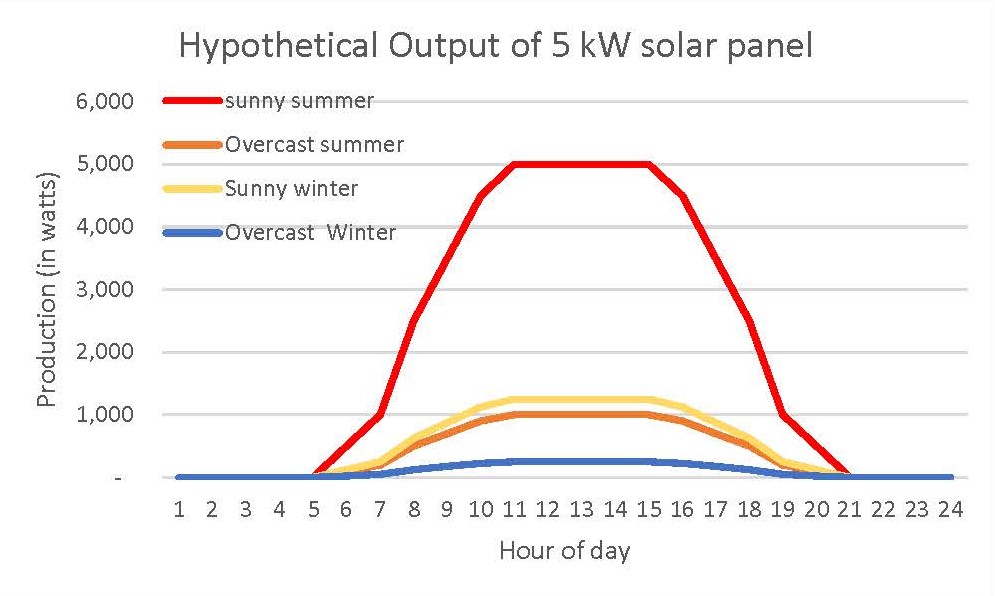Installing a Solar Power System?
If you are considering installing solar in your business or home, this page is for you. Whether your installation is large or small, the information and forms you need to make this installation a success are right here. These processes and forms have been standardized across the State through a process which engaged all stakeholders: utilities, contractors, electrical inspectors, and regulatory authorities.
The University of Minnesota has done a study on solar effectiveness throughout our State. It’s results can be found at https://solar.maps.umn.edu/app/. This is a good place to start.
If you’re looking at doing a rooftop application (less than 20 kw) you or your contractor/agent will be using the Simplified Approach. Larger installations (over 20kw) will require the use of either the Fast Track or the Study Process Booklet and will require quite a bit more engagement with Utility personnel.
Solar Power – Understanding Its Application in Your Home
Now that rooftop solar installations have begun to appear in our area, it is important to clarify how a residential application typically works. This article is meant to inform well-intentioned customers who are thinking about installing solar, but have little or no idea of what they are getting into. You can be easily misled by the solar panel salesman to believe far more than what the panels can deliver.
We have a handful of residential solar installations in town that are either completed or in process. Their average size is roughly 5 kw. That means they can generate 5,000 watts of power when operating at full capacity. This graph shows hypothetical production of a 5 kw panel under various conditions; summer, winter, sunny, or cloudy.

With this solar production graph in mind and the chart showing electric appliance wattage on the residential conservation page, one can determine that, on a cloudy day in December, you might generate 200 watts of power when the sun is highest. That’ll run several lights and a TV for several hours during the day. . . . roughly from 10:00 to 2:00. However, on a sunny winter day, the panel might generate 1200 watts, which means you’d also be able to run a chest freezer and a refrigerator for those four hours. But, I’m afraid you won’t be able to heat your house at all using your PV solar panel because the output of a 5 kw installation on a sunny day in winter (1,200 watts) is not enough to run even one space heater (1,250 watts). Of course on a sunny summer day, you’ll have plenty of power; 5,000 watts worth, but who needs the heat then? You could run your oven, your dryer (but not at the same time) or your air conditioner – at least until about 4:00 or 5:00. But charging your electric vehicle (EV) at night, when the sun is down, is out of the question. Essentially, you’ll have excess power in the summer, which, in a proper installation, is sold back to the Utility for the same price as we charge, so if you’re not able to use the power, you are still getting the same benefit for it as if you did use it.
Another important point to stress is that solar panel sales people will do their calculations and let you know how long it’ll be before the panels have paid for themselves. In their calculation they will assume that the price of power from your local utility will increase by 3.5%. Virginia Public Utility’s average energy rate from 2013 to 2021 increased from $.1007 to $.1249 or 2.67% per year. This lower rate will extend your payback period quite a bit.
The point is that spending $20,000 or more on a solar installation isn’t the only way to save money or the environment. Instead of spending money on a personalized solar power generation system, find ways to use less electricity. If saving the planet is your objective, you can cut down on usage and save money at the same time. And, better yet, the payback on your investment is practically nothing. So, consider line-drying your clothes, changing to all LED lights, buying more efficient appliances, planting shade trees, drawing cool outside air into the house overnight instead of running the A/C unit, etc. There’s a ton of things you can do. No, it may not be as convenient. Yes, it’s “so old school”. But this is what people did all the time a hundred years ago. It’s not sexy, but it works.
